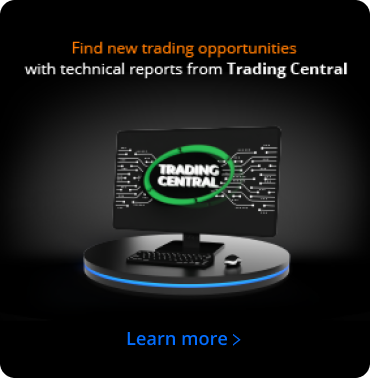Négociation de contrats à terme
Risque commercial ou de couverture sans frais de swap
Le trading comporte des risques
INDICES DE
US, ROYAUME-UNI, UE & ASIE
COMMERCE DE
$0 COMMISSION
JUSQU'À
1: EFFET DE LEVIER 100
4 FUTURES
INDICES DE
US, ROYAUME-UNI, UE & ASIE
COMMERCE DE
$0 COMMISSION
JUSQU'À
1: EFFET DE LEVIER 100
4 FUTURES
Négocier des marchés à terme
Symbole
Offre
Demander
Spread

*Les prix sur cette page sont indicatifs. Les prix des instruments avec une liquidité plus faible tels que, mais sans s'y limiter, les paires de devises exotiques, les actions et les indices ne sont pas mis à jour aussi fréquemment que les instruments couramment échangés. Veuillez consulter votre plateforme MT4 / MT5 pour les derniers prix en direct.
Qu'est-ce qu'un contrat à terme
Les contrats à terme sont des contrats dérivés qui obligent les parties concernées à acheter ou à vendre un actif à une date future prédéterminée et à un prix fixé. Le prix est dérivé de l'actif sous-jacent et la nature de ces contrats les rend utiles pour la négociation et la couverture. Les contrats à terme sont assortis d'une date d'expiration et ne comportent pas de frais de swap au jour le jour ; ils sont donc très rentables pour les opérations à long terme.

Pas d'échanges du jour au lendemain

Idéal pour les haies

Négocier avec un effet de levier
Comment fonctionne la négociation des contrats à terme
La négociation de contrats à terme fonctionne de la même manière que la négociation de CFD, mais chaque contrat à terme a une date d'expiration. Vous pouvez clôturer votre position à tout moment ou laisser le contrat se terminer à l'échéance. Si vous souhaitez maintenir votre position après la date d'expiration, vous pouvez ouvrir une nouvelle position sur un contrat à terme dont la date d'expiration est plus tardive. Les contrats à terme sont fréquemment mis à jour avec de nouvelles dates d'expiration et la date d'expiration de chaque contrat à terme est indiquée par le suffixe du symbole. Par exemple, DJ.H24 est un contrat à terme sur le Dow Jones qui expire en mars 2024. SP.N24 est un contrat à terme sur le S&P 500 qui expire en juillet 2024.
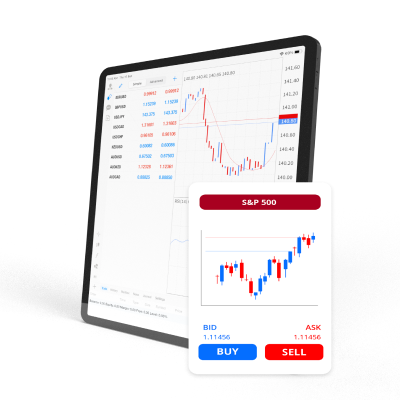
Prix d'achat et de vente
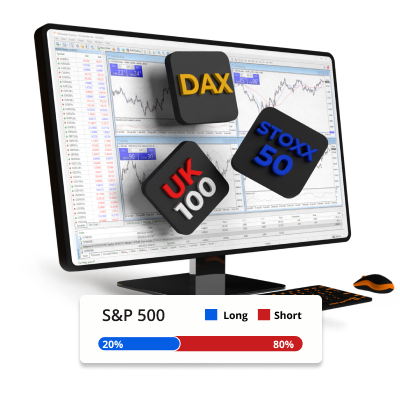
Soyez long ou short
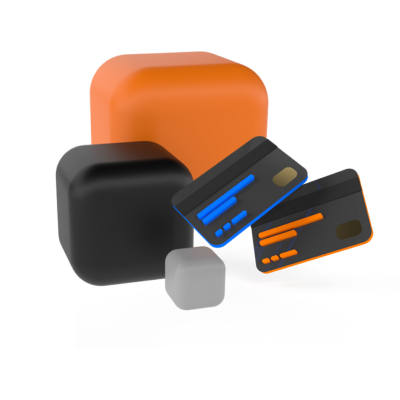
Les contrats à terme sont négociés par lots
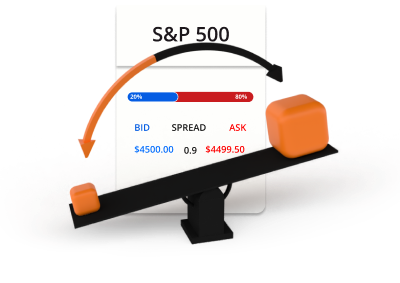
Les opérations sur contrats à terme impliquent un effet de levier et une marge
Exemple de négociation de contrats à terme
Vous décidez d'acheter 0,1 lot de contrats à terme sur le S&P500 à 4500 en utilisant un effet de levier de 100:1.

5 contrats à terme x 4500 = 22 250 USD
USD 22,250
USD 22,250 / 100 = USD 225
Vous avez ouvert une position longue sur le S&P500 d'une valeur de 22 250 USD. Étant donné que les contrats à terme sont négociés avec un effet de levier, seuls 225 dollars ont été utilisés comme marge sur votre compte de négociation. Après un certain temps, le prix du S&P500 évolue et vous décidez de vendre.
Scénario 1

Le S&P500 passe de 4500 à 4600 et vous décidez de vendre.
C'est ainsi que sera calculé le bénéfice ou la perte sur la transaction.
P/L = (Prix actuel - Prix initial) x Valeur de la position) / Prix actuel
P/L = ((4600 - 4500) × 22,250) / 4,600
P/L = (100 × 22,250) / 4,600
P/L= 483.70
Scénario 2

Le S&P500 passe de 4500 à 4400 et vous décidez de vendre.
C'est ainsi que sera calculé le bénéfice ou la perte sur la transaction.
P/L = (Prix actuel - Prix initial) x Valeur de la position) / Prix actuel
P/L = ((4400 - 4500) × 22,250) / 4,400
P/L = (-100 × 22,250) / 4,600
P/L = -483.70
Pourquoi TIOmarkets
Voici pourquoi des personnes comme vous choisissent TIOmarkets

Spreads à partir de 0.0 pips
Négociez avec des spreads variables bruts sur notre compte Raw

Négociation sans commission
Tradez à partir de $0 par lot sur nos comptes VIP Black ou Standard

MT4 & MT5
Plateformes de négociation avancées pour ordinateur, web et mobile

Exécution rapide des ordres
Traitement efficace et fiable des ordres en quelques millisecondes

Leverage illimité.
Négociez avec un effet de levier illimité sur notre compte Standard

Bonus de fidélité de 30%
Obtenez un bonus à chaque dépôt sur notre compte Standard
Tradez sur les plateformes MT4 ou MT5
Depuis votre bureau, navigateur internet ou mobile
Commencez à négocier en quelques minutes
Voici comment cela fonctionne

ÉTAPE 1
Inscrivez-vous
Veuillez compléter votre profil et créer votre compte, cela ne prend que quelques minutes.

ÉTAPE 2
Vérifiez
Veuillez télécharger une pièce d'identité et un justificatif de domicile, ces documents sont obligatoires avant tout retrait.

ÉTAPE 3
Créditer
Choisissez parmi plusieurs méthodes de paiement locales et internationales pratiques et effectuez un dépôt instantané.

ÉTAPE 4
Commerce
Téléchargez la plateforme, transférez des fonds sur votre compte, connectez-vous et commencez à trader.
Le trading comporte des risques
